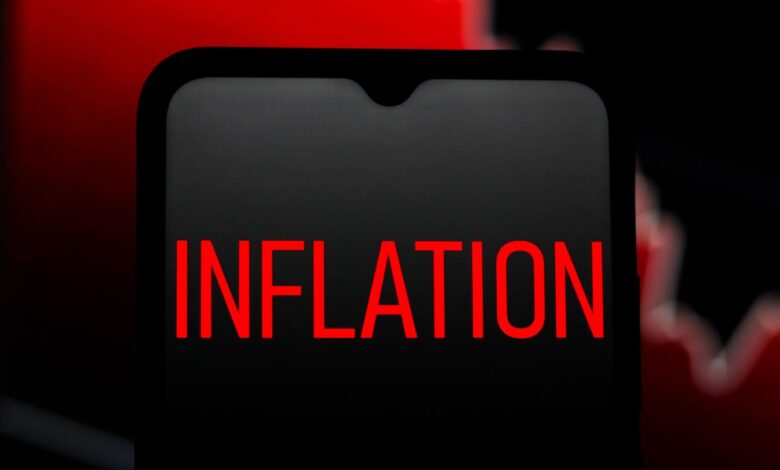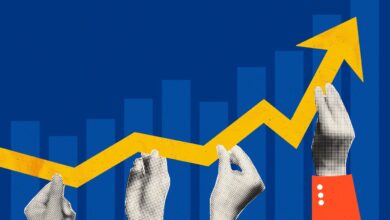Inflation Rose To 2.9%, Jobs Are Down, And The Government Is In A Bind

📝 usncan Note: Inflation Rose To 2.9%, Jobs Are Down, And The Government Is In A Bind
Disclaimer: This content has been prepared based on currently trending topics to increase your awareness.
CANADA – 2025/08/30: In this photo illustration, Inflation text is seen displayed on a smartphone screen. (Photo Illustration by Thomas Fuller/SOPA Images/LightRocket via Getty Images)
SOPA Images/LightRocket via Getty Images
The Consumer Price Index jumped from 2.7% year-over-year in July to 2.8% in August. Core CPI — goods and services without including energy or food — remained 3.1%. The estimated initial jobless claims of 236,000 were short of the actual 263,000. All this raises a question of where the economy will land.
More Economic Data And The Good Part Of The News
There are more questions about the country’s economic foundation. The annual job revision, this time for April 2024 through March 2025, was the largest in a decade at -911,000. By the way, this revision also gets revisited with an update in January 2026. Last year it was -818,000. It was eventually recalculated at -589,000. Under a revision, the -911,000 could get better or worse.
(By the way, these changes happen when trying to reconcile two different surveys when fewer companies send their replies in a timely manner and there are fewer federal employees to follow up on what is missing. One of the results of a federal job cut mania without attention to what needs to get done and how many people that takes.)
Jobs took a separate big tumble on September 5 when the jobs numbers for August came out. July’s 79,000 gave way to predictions of 75,000 in August. Payroll giant ADP, which works off its own data, estimated that August numbers would be 54,000. The official figures: 22,000 new jobs.
Then there the U.S. 10-year Treasury Note yield. That’s the interest paid on 10-year government bonds. Following along at 3p.m. on September 11, it’s down a few thousandths of a percentage point above 4%, the latter being seen as a critical threshold.
The good part of the news is that the Fed is likely to cut 25 basis points, or a quarter of a percent, off the benchmark federal funds rate. That’s the interest rate banks charge one another for overnight borrowing without being secured with collateral. The federal funds rate has huge influence on a broad range of short-term interest rates and also on something called the Secured Overnight Financing Rate, the cost of borrowing money overnight using Treasury securities as guarantees.
Eventually, a rate cut by the Fed means the ability to borrow for less, potentially meaning lower interest rates for all sorts of borrowing, whether some types of commercial loans as well as consumer loans and credit cards.
The 10-year yield is also the basis of important borrowing, though longer-term. Home mortgages are an example. So, if the 10-year keeps dropping, in theory mortgage rates could drop and buying a home could be a bit easier.
The Bad News
One more economic item — tariffs. This is perhaps the biggest point of confusion. The Producer Price Index (PPI) is the business version of inflation and an early indicator of what might happen. That’s where you might expect tariffs, paid by the importer, would first show up. The year-over-year increase was 2.6%, down from the 3.1% of July. Core PPI was 2.8%, a bit higher than 2.7%. Some experts had already said that the impact of tariffs have been much lower than expected.
But then, given how frenetically thrashing the entire tariff and trade policy and strategy have been in practice, expecting a predictable rollout and impact was probably unrealistic on everyone’s part. Some now think that the impact of tariffs on prices has begun and will increase over time, though no one knows how quickly or far this could progress.
The combination of factors, including jobs, inflation, tariffs, growing inflation, market concerns about the economy going forward, and extreme national debt, make any decision by the Fed difficult. It can cut interest rates in hopes of stimulating economic activity and saving jobs. The strategy, tried for about 15 years after the Great Recession (or Global Financial Crisis if that term lands better), didn’t seem to fix anything. During the pandemic, a zero-interest rate policy (also known as ZIRP) did next to nothing for most people and pushed a lot of money into assets like real estate, driving up costs and inflation.
If inflation rises, the Fed could increase interest rates in an attempt to slow the economy. It didn’t work too well when recently done because the cause of inflation was a lack of supply, not an excess of demand. But that would be the likely choice, which likely would mean pressure on businesses to cut costs and a good chance of layoffs.




